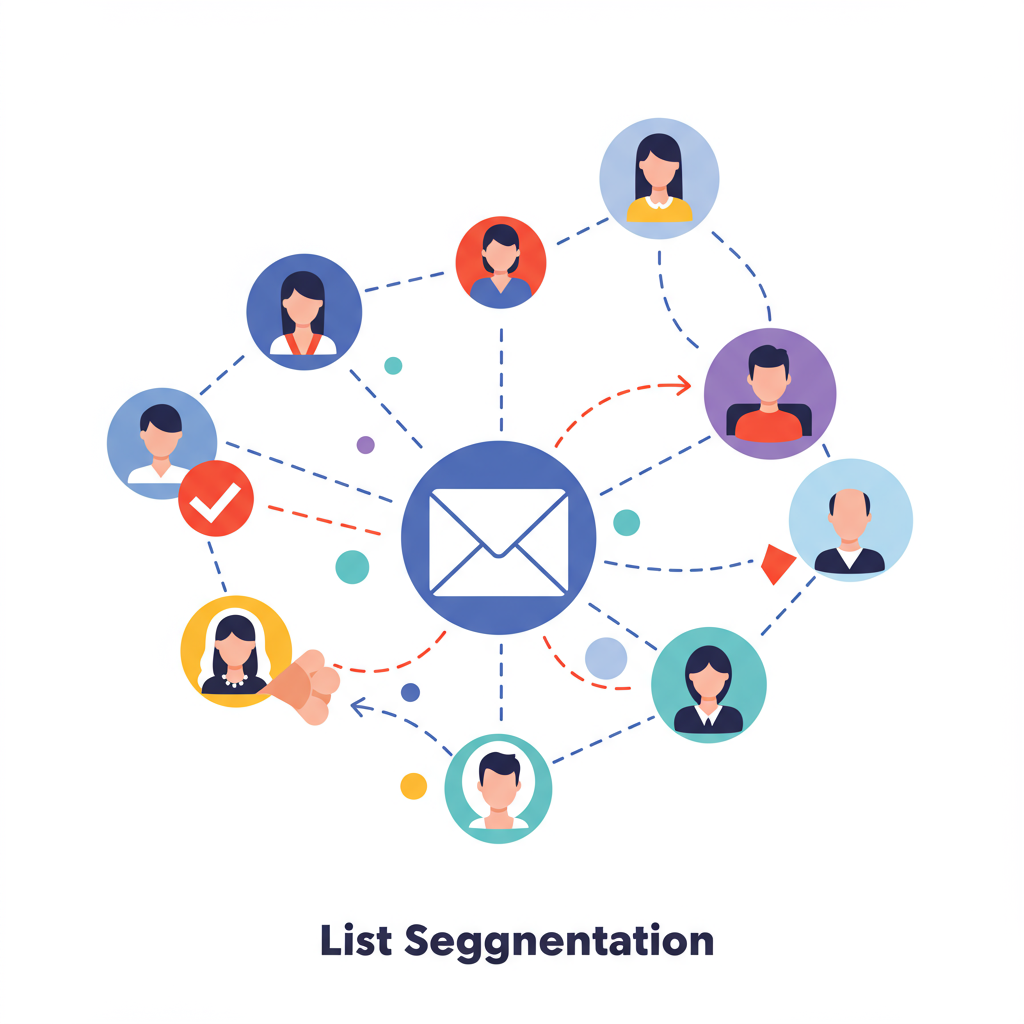Unlock higher conversions and deeper customer relationships by segmenting your email list effectively.
As a Shopify merchant, I know you’re constantly looking for ways to grow your business and connect more deeply with your customers. Email marketing remains one of the most powerful tools in our arsenal, offering an incredible return on investment when done right.
However, simply sending generic emails to your entire list is no longer enough. In today’s crowded inbox, personalization is key, and that’s where email list segmentation comes into play.
I’ve seen firsthand how a well-segmented email strategy can transform a struggling email campaign into a revenue-generating powerhouse. It’s not just about sending more emails; it’s about sending the *right* emails to the *right* people at the *right* time.
So, what exactly is email list segmentation? In simple terms, it’s the process of dividing your email subscribers into smaller groups based on shared characteristics, behaviors, or preferences.
Instead of a one-size-fits-all approach, we tailor our messages to resonate specifically with each segment. This dramatically increases the relevance of our communications, leading to better engagement and, ultimately, more sales.
Why is this so crucial for your Shopify store? Think about it: a first-time visitor who just signed up for your newsletter has very different needs and interests than a loyal customer who has made five purchases.
Sending both of them the same “welcome” email or a generic “new arrivals” promotion misses a huge opportunity to connect on a personal level. It can even lead to unsubscribes if the content isn’t relevant.
The benefits of effective segmentation are numerous. I’ve personally observed significant improvements in open rates, click-through rates, and conversion rates.
Beyond direct sales, segmentation also helps reduce unsubscribe rates, build stronger customer loyalty, and gather valuable insights into your customer base. It allows us to nurture leads more effectively.
To begin segmenting, we first need data. Shopify provides a wealth of information about our customers, from their purchase history to their browsing behavior.
We can also collect data through sign-up forms, surveys, and tracking website activity. The more data points we have, the more sophisticated and effective our segments can become.
Let’s dive into some of the most effective segmentation strategies I recommend for Shopify merchants. These are tried-and-true methods that have consistently delivered results.
**New vs. Returning Customers:** This is perhaps the most fundamental segmentation. New customers need nurturing, trust-building, and perhaps a special welcome offer.
Returning customers, on the other hand, might be interested in loyalty programs, exclusive previews, or complementary products based on their past purchases.
**High-Value Customers (VIPs):** Identify your top spenders or most frequent purchasers. These are your VIPs, and they deserve special treatment.
We can send them exclusive discounts, early access to sales, or personalized thank-you notes. Nurturing these relationships is paramount for long-term success.
**Abandoned Cart Segment:** This is a goldmine for Shopify stores. Customers who added items to their cart but didn’t complete the purchase are highly engaged and just need a gentle nudge.
Automated abandoned cart recovery emails, often with a small incentive, are incredibly effective. I’ve seen these campaigns recover a significant percentage of lost sales.
**Product Viewers/Browsers:** Segment users who viewed specific products or categories but didn’t add them to their cart. We can send them follow-up emails featuring those products or related items.
This shows we understand their interests and can provide relevant suggestions, guiding them closer to a purchase.
**Purchase Frequency/Recency/Monetary (RFM) Segments:** This advanced segmentation categorizes customers based on how recently they purchased, how often they purchase, and how much they spend.
It allows us to identify our most valuable customers, those at risk of churning, and those who need re-engagement campaigns.
**Specific Product Purchasers:** If a customer bought a specific product, we can segment them to offer complementary products, accessories, or future versions of that item.
For example, if someone bought a coffee maker, we could follow up with emails about coffee beans, filters, or cleaning supplies.
**Location-Based Segments:** For businesses with physical stores or region-specific promotions, segmenting by location is invaluable. We can announce local events, store openings, or shipping deals.
**Engagement Level:** Not all subscribers are equally engaged. We can segment based on open rates, click rates, or recent activity.
This allows us to re-engage inactive subscribers with special offers or surveys, while continuing to provide valuable content to our most active users.
**Newsletter Subscribers (Non-Purchasers):** These individuals are interested in your brand but haven’t made a purchase yet. We can nurture them with educational content, brand stories, and testimonials.
The goal here is to build trust and move them down the sales funnel, eventually converting them into paying customers.
Implementing these segments on Shopify typically involves integrating with a dedicated email marketing platform like Klaviyo, Mailchimp, Omnisend, or ActiveCampaign.
These platforms seamlessly pull data from your Shopify store, allowing you to create dynamic segments and automate personalized email flows.
My best advice for getting started is to begin simple. Don’t try to implement all segments at once. Pick one or two that you believe will have the biggest impact, like abandoned carts or new vs. returning customers.
Always test your segments and the content you send to them. A/B test subject lines, call-to-actions, and even the timing of your emails to see what resonates best with each group.
Remember to regularly clean your email list. Removing inactive subscribers improves your deliverability rates and ensures your messages are reaching engaged recipients.
What do you think about this approach to email marketing? I’m always curious to hear how other merchants are tackling their strategies.
In conclusion, email list segmentation is no longer a luxury; it’s a necessity for any Shopify merchant serious about maximizing their email marketing ROI.
By understanding your customers better and tailoring your communications, you’ll not only drive more sales but also build stronger, more lasting relationships with your audience.
I encourage you to start experimenting with segmentation today. The results, I assure you, will speak for themselves.






